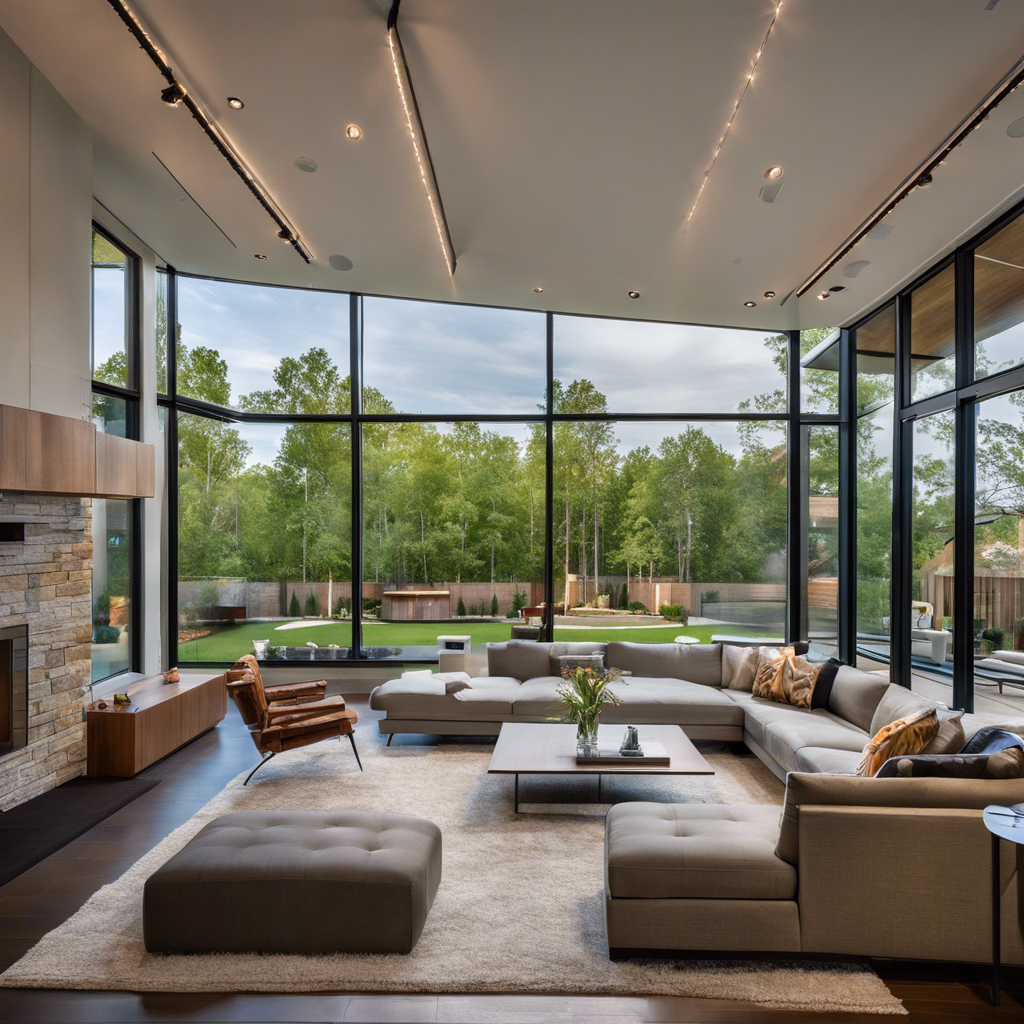When you step into a newly constructed building in Tulsa, you expect it to be comfortable and well-regulated, regardless of the weather outside. Imagine walking into a brand new office space on a scorching summer day, only to find that the air conditioning is struggling to keep up with the demand, leaving you feeling hot and sticky.
Or picture entering a newly built home during the winter months, only to discover that the heating system is unable to provide adequate warmth, leaving you shivering and uncomfortable. In these scenarios, the importance of HVAC system design becomes glaringly evident.
But why is it so crucial? Well, let’s explore the various factors that make HVAC system design a vital consideration for new construction projects in Tulsa.
Key Takeaways
- HVAC system design in new construction in Tulsa should prioritize adequate dehumidification capabilities due to the area’s humid subtropical climate.
- Smart technology integration, such as smart thermostats and automation systems, can maximize energy efficiency and reduce utility costs.
- Effective indoor ventilation systems are crucial for creating a comfortable and healthy indoor environment, controlling humidity levels, and removing pollutants.
- Proper sizing and load calculations are essential to ensure proper airflow, adequate heating and cooling, and to reduce energy consumption and operating costs in the long run.
Climate Considerations for HVAC Design
When designing an HVAC system for new construction in Tulsa, it’s crucial to take into account the unique climate considerations of the region.
Tulsa experiences a humid subtropical climate, characterized by hot summers and mild winters. This means that humidity control is of utmost importance in HVAC system design. High humidity levels can lead to discomfort, mold growth, and decreased indoor air quality.
To address this, the HVAC system must include adequate dehumidification capabilities, such as a properly sized and efficient dehumidifier.
Additionally, ventilation requirements should be carefully considered to ensure optimal air exchange and indoor air quality. This includes providing sufficient fresh air intake and exhaust, as well as properly designed and placed air vents and ductwork.
Energy Efficiency and Cost Savings
To maximize energy efficiency and achieve cost savings, it’s essential to carefully consider several key factors in the design of the HVAC system for new construction in Tulsa.
One important factor is smart technology integration. By incorporating smart thermostats, sensors, and automation systems, you can optimize energy usage and reduce utility costs. These advanced technologies allow you to remotely control and monitor your HVAC system, ensuring that it operates at peak efficiency.
Additionally, proper maintenance and upkeep of your HVAC system is crucial for energy efficiency and cost savings. Regularly cleaning or replacing air filters, checking for leaks or ductwork issues, and scheduling professional inspections can help identify and address any inefficiencies or malfunctions before they become costly problems.
Comfort and Indoor Air Quality
After optimizing energy efficiency and cost savings through smart technology integration and regular maintenance, the next crucial aspect to consider in the design of the HVAC system for new construction in Tulsa is ensuring comfort and maintaining indoor air quality.
To achieve this, it’s essential to incorporate effective indoor ventilation systems and advanced air filtration technologies. Indoor ventilation systems play a vital role in creating a comfortable and healthy indoor environment by continuously supplying fresh air and removing stale air. These systems help to control humidity levels, prevent the buildup of pollutants, and distribute conditioned air evenly throughout the space.
Additionally, air filtration technologies are crucial in removing harmful particles such as dust, allergens, and pollutants from the air, ensuring clean and healthy indoor air quality.
Proper Sizing and Load Calculations
Proper sizing and load calculations are essential in ensuring the optimal performance and efficiency of the HVAC system for new construction in Tulsa.
When it comes to ductwork design, it’s crucial to accurately determine the size and layout of the ducts to ensure proper airflow throughout the building. Improper duct sizing can result in inadequate cooling or heating, causing discomfort and reduced indoor air quality.
Load calculations are used to determine the heating and cooling requirements of the space, taking into account factors such as insulation, building materials, and occupancy levels. By accurately calculating the load, you can select the appropriately sized equipment that can efficiently meet the heating and cooling needs of the building.
This not only ensures comfort but also helps in reducing energy consumption and operating costs.
Long-Term Benefits and ROI
Accurate sizing and load calculations not only ensure the optimal performance and efficiency of the HVAC system in new construction, but they also contribute to the long-term benefits and return on investment for the building owners and occupants. By properly designing the HVAC system, you can significantly reduce long-term maintenance costs. An accurately sized system operates efficiently, minimizing wear and tear on components and reducing the need for frequent repairs. This, in turn, translates into lower maintenance expenses over the lifespan of the system.
Moreover, an efficiently designed HVAC system also has a positive environmental impact. A properly sized system consumes less energy, resulting in reduced greenhouse gas emissions and lower energy bills. The long-term benefits of reducing your carbon footprint and conserving energy resources aren’t only good for the environment but can also enhance your company’s reputation as a responsible and sustainable business.
Investing in an accurately designed HVAC system ensures long-term benefits, including lower maintenance costs, reduced environmental impact, and a positive return on investment. By prioritizing proper sizing and load calculations, you can create a comfortable and efficient building environment while maximizing the longevity and efficiency of your HVAC system.
Frequently Asked Questions
How Does the HVAC System Design Affect the Overall Aesthetics of a New Construction Project in Tulsa?
When considering the aesthetics of a new construction project in Tulsa, the HVAC system design plays a crucial role. It impacts the overall look and feel of the building, while also ensuring energy efficiency.
Can the HVAC System Design Impact the Acoustics and Noise Levels Within a Building?
Yes, the HVAC system design can have a significant impact on the acoustics and noise levels within a building. Properly designed HVAC systems can help reduce noise pollution and create a more comfortable and peaceful indoor environment.
What Are the Key Factors to Consider When Designing an HVAC System for a Multi-Story Building in Tulsa?
When designing an HVAC system for a multi-story building in Tulsa, key factors to consider are energy efficiency and space utilization. Ensure proper ventilation, insulation, and zoning to maximize comfort and minimize energy consumption.
Are There Any Specific Regulations or Codes That Need to Be Adhered to When Designing an HVAC System for New Construction in Tulsa?
Do you know the specific regulations and codes that HVAC system design for new construction in Tulsa must adhere to? It is crucial to follow these guidelines to ensure a safe and efficient system.
How Does the HVAC System Design Affect the Overall Lifespan and Maintenance Requirements of the System?
The HVAC system design directly impacts the lifespan of the system and its maintenance requirements. Proper design ensures efficient operation, reducing wear and tear on components and the need for frequent repairs. Regular maintenance prolongs the system’s life and keeps it running smoothly.


